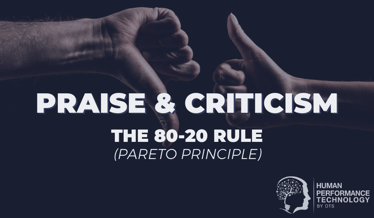In a Nutshell: SWOT Analysis
The SWOT framework was developed by American management consultant Albert S. Humphrey and his colleagues while working at the Stanford Research Institute (now SRI International) during the 60s and 70s.SWOT was a result of the desire to understand why strategic planning in large companies often failed and how to get management teams to agree on common objectives. SRI produced a method for planning used with teams called SOFT analysis:
- Satisfactory (what is good in the present?)
- Opportunity (what is good in the future?)
- Fault (what is bad in the present?)
- Threat (bad in the future?)
This was used as a sub-element of a larger planning process in which SOFT was analysed in relation to “six programme-planning categories”. These were Product, Process, Customer, Distribution, Finance, and Administration.
According to Humphrey, SOFT analysis was presented in a seminar at Zurich in 1964 and Urick and Orr changed the F to a W and called it the SWOT analysis. This was the first time it was presented as a standalone tool rather than being part of a process. Weihrich (1982) later presented SWOT in the format of a matrix, displaying internal factors (the strengths and weaknesses) and external factors (opportunities and threats). It is Weihrich who is often credited with the four-box matrix now in common use.
Overview:
Short for strengths, weaknesses, opportunities and threats, SWOT analysis is one of the most popular and commonly used models in a wide variety of strategic planning activities, which can be applied to a company, product, area, system or individual.
The SWOT matrix is easy to understand and only takes a few seconds to construct. It is often drawn as a simple 4-box diagram on a sheet of paper with open space to list ideas within each quadrant. SWOT very simply identifies the internal and external factors that are favourable and unfavourable to the subject of the discussion.
In general business use, SWOT is most often employed as a high-level framework for helping to brainstorm, examine and explore the various factors that may influence the success of a company’s market position or a specific product, marketing campaign, initiative or venture relative to its competitive environment. Ideas are usually generated in a group format. The general purpose of the framework is to use the information gained from the group discussion to raise awareness, clarify thinking, and generate strategies designed to protect or improve the company’s interests or market position. Sometimes, the framework is applied to individuals as a self-development exercise, which is known as a “personal SWOT analysis”.
With relevance to a business context, below are some of the factors that might be discussed in each zone as an example.
Strengths (Internal Positives)
- Experience, skills and knowledge in the proposed industry.
- Good business location.
- Product/ service uniqueness.
- Owned resources (plant, equipment, facility, etc.)
Weaknesses (Internal Negative)
- Inadequate financing capabilities.
- High cost of production.
- Lack of marketing and distribution channels.
- Inability to adopt new technology.
Opportunities (External Positives)
- Unmet customer needs.
- New and developing markets.
- Technology development.
- Weak or few competitors.
- Loosening of regulations.
Threats (External Negatives)
- Changing consumer tastes.
- Substitute products.
- Increasing competition.
- Technological changes.
- Adverse government policies.

Theo Winter
Client Services Manager, Writer & Researcher. Theo is one of the youngest professionals in the world to earn an accreditation in TTI Success Insight's suite of psychometric assessments. For more than a decade, he worked with hundreds of HR, L&D and OD professionals and consultants to improve engagement, performance and emotional intelligence of leaders and their teams. He authored the book "40 Must-Know Business Models for People Leaders."


/Rejected%20by%2012%20publishers.png?width=374&name=Rejected%20by%2012%20publishers.png)
We Would Like to Hear From You (0 Comments)